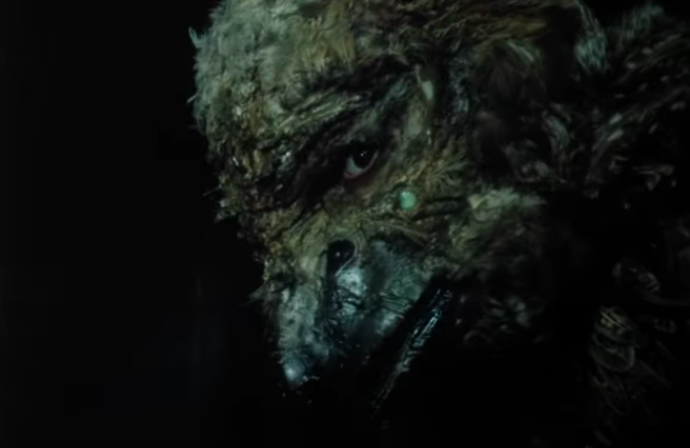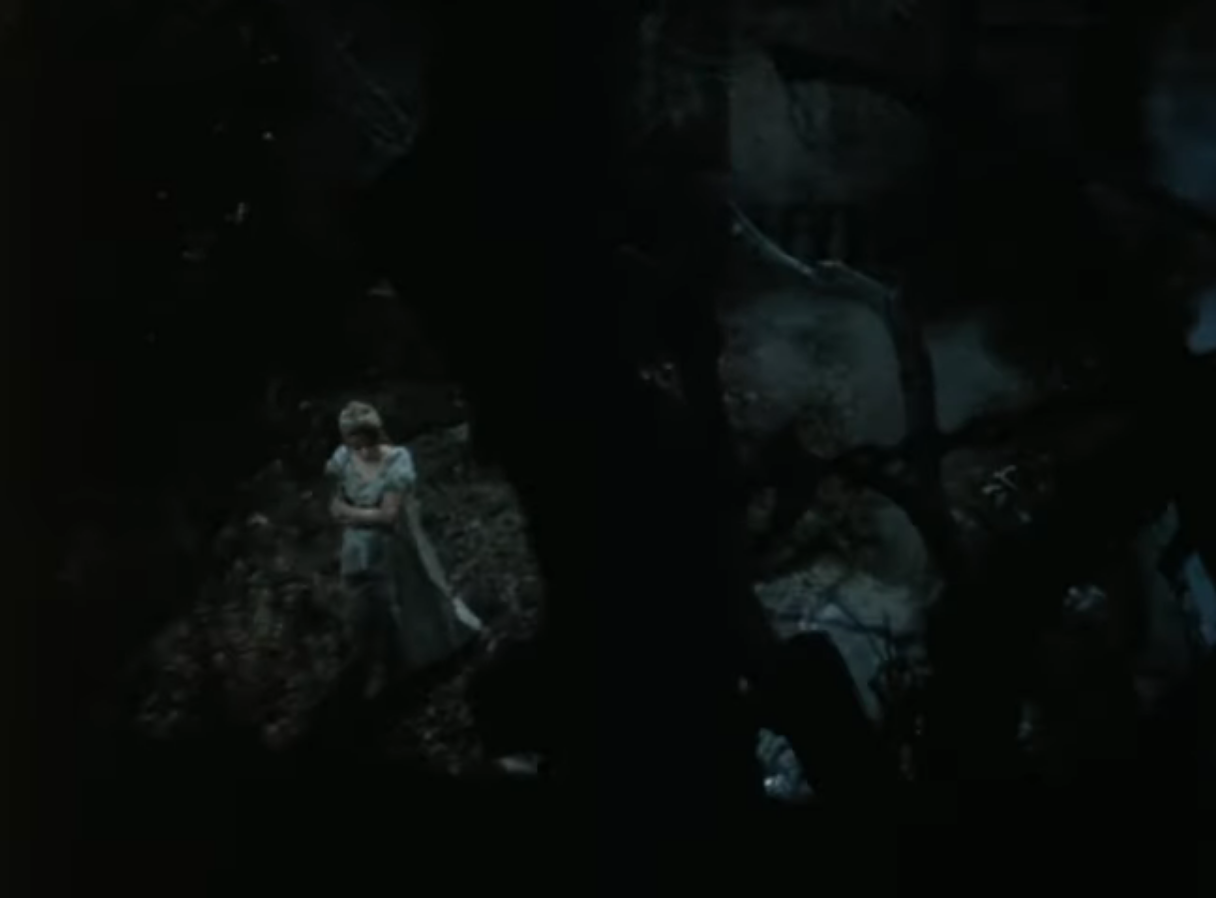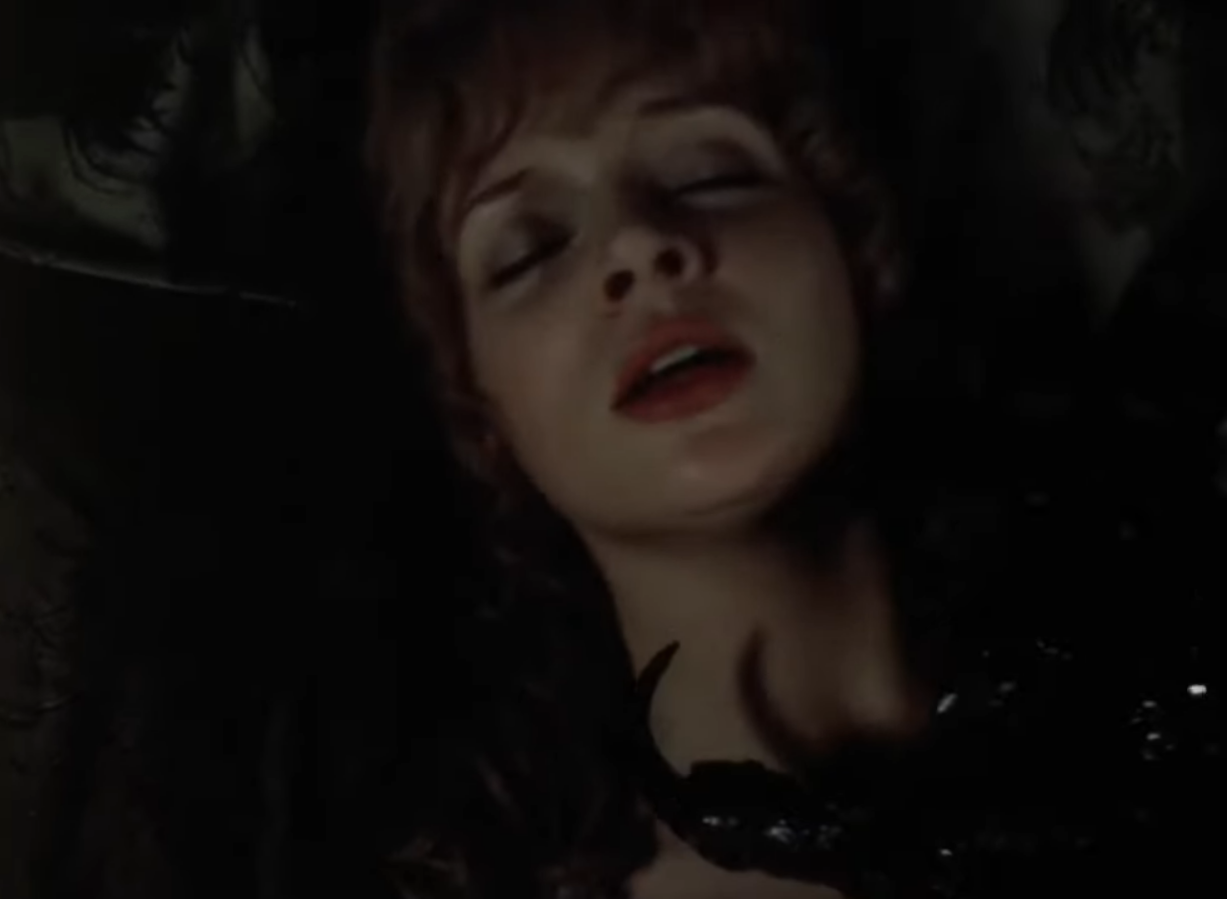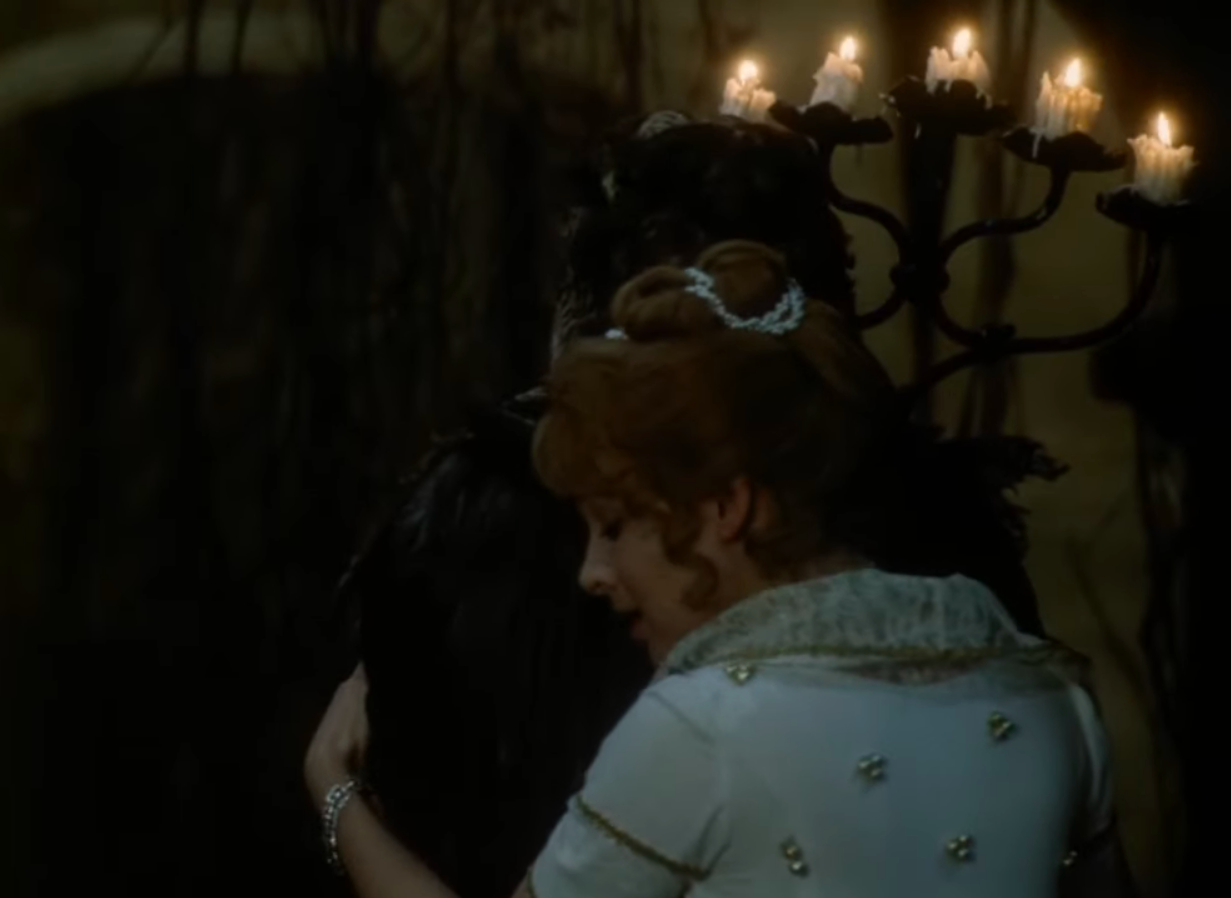Beauty, Beast, Virgin, Monster | Panna a Netvor & La Belle et la Bete
Violence and subjectivity.
The discovery for me in my last letter's overview of the horror films of Juraj Herz was his adaptation of Beauty & The Beast. I've since rewatched it and become even more of a fan. This week, a discussion of that film . . . .
Films discussed: Panna a Netvor (1978) and La Belle et la Bete (1946). Spoilers, I suppose, for both, but you know the story already.
Content warning: Domestic violence.
Juraj Herz’s Panna a Netvor (1978, “Beauty and the Beast” or “The Virgin and the Monster”) tells the Beauty and the Beast story with such a savor for horror set pieces and visuals that we might think of it, if La Belle et la Bete (1946) endures in our memory for its beauty and its poetry, as a dark departure from the fairy tale of the Cocteau classic. (They both take their stories from the 1757 tale by Jeanne-Marie Leprince de Beaumont.) But if, as in my case, screening Herz’s film sends us back to rewatch Cocteau's, we are unlikely to settle on so neat a characterization. La Belle et la Bete may depict an almost impossibly gorgeous vision of an enchanted world, but it contains, in more subdued form, much of the menace so nakedly visible in Panna a Netvor. Panna a Netvor embraces the horror in its telling, but it’s a horror that’s been there all along.
Its harsher, stranger, more revelatory mode leaps out in the figure of the Monster ("Monster" being a direct translation of “Netvor,” Herz’s Beast, played by Vlastimil Harapes). Man-shaped with a bird’s head and clawed hands, he’s a kind of hybrid. To quote the goblin-like creature at his mansion, he’s “[n]either bird, nor beast, nor man.” This is his “curse” according to the creature, and the Monster surely agrees. If his appearance might translate less gracefully than Cocteau’s Beast into a cuddly Disney character, it would not be at all impossible—though the Monster remains certain of his ugliness. The strangeness of his appearance, his inhumanness, and his hybridity—his estrangement from every category of creature—renders him, to his mind, a monster. He’s unwilling to be seen and so, though Julie (Zdena Studenková), our Beauty, is living in his home, he’s forever lurking at the margins of rooms and running out of sight—Phantom of the Opera-like—with a flourish of his cape.

If the exaggerated claws, the bird head, and his raw manner make the Monster a more startling, more threatening creature than Cocteau’s lion-like Beast, the terms of his relationship with Julie are coercive in precisely the same way as the Beast’s. Julie’s been blackmailed into living with him. Either her father would be killed—punishment for stealing a rose—or one of his daughters must return to the Monster’s mansion in his stead. The Monster is infatuated with her, ultimately in love with her, and he tells Julie, just as the Beast tells Belle, that she’s in charge. That she’s the mistress of the house. That he is her servant. But she is not free to go. She is not free, even, to turn and look at the Monster. She's a prisoner.
Julie's safety depends then on the creature she’s imprisoned with. She's at more risk than Belle is in the Cocteau, though Belle is not incredibly safe herself. Twice in La Belle et la Bete the Beast bursts through the house to her bedroom, out of control, violence in the air, one time with the smoking hands that indicate a fresh kill (presumably of a deer). The Monster’s relationship with Julie contains this same dangerous element, but here it is foregrounded. Herz depicts a Monster surging with visible, kinetic, ever-threatening violence.

Herz puts us repeatedly in the Monster’s POV. These roaming, voyeuristic shots—often watching Julie in her new home in the overgrown, decrepit mansion—are predatory, carnal, uneasy. They carry something of the charge of a killer’s POV in a slasher or giallo. Especially so because we’ve already seen the Monster commit murder.
Panna a Netvor has its horror movie opening kill. A woman runs through the mist, hunted through woods by an off-screen pursuer. When he catches up to her, her eyes go wide and she screams as the Monster’s strikes out to claw red gashes into her chest. The Monster savors murder and he wrestles with thoughts of killing Julie. The goblin goads him on. “See that white throat,” the goblin says as they look at the portrait of Julie’s mother that’s come to stand for her. “You know how sweet blood tastes.” The Monster struggles to resist his urge to kill, even telling the goblin that he’ll do it. Near the film’s end, when Julie has seen his face, she asks him why he hid it from her. “You would have fled in horror that first night,” he says, “and I’d have been compelled to hunt you through the woods and finally kill you.” Killing is a compulsion, something innate, something essential to his character.
The violent and the sexual overlap. The Monster’s obsessed with Julie, drawn to her, and the urge is romantic, and sexual, and violent. When she first arrives at his mansion, the goblin drugs her drink, and she falls asleep in bed. As she dreams of the prince the Monster once was (and will be again), the Monster stands over her, his clawed hand gripped around her white throat. He of course does not harm her, but only after a long spell of indecision. He finally tears himself away and runs from the room. The Monster wants all of her—to possess, to marry, to kill.

Julie, like Belle, relates to the Monster, and, ultimately, breaks his curse, through the strength of her own generous, reality-defying perspective: that the Monster is good, is pleasant, is worth loving. This even though he's murderous—even though his threat to kill her father brought her to him in the first place. When he says he would have killed her if she ran the first night, she responds, “I don’t believe that.” She is, of course, quite sincere. She tells him what does concern her: “Your anger doesn’t frighten me . . . . I’m afraid I won’t see anyone [when I turn around]. That I’m all alone here. That I’m imagining everything I hear.” Julie's primary concern is not who the Monster is but that she might be left alone without him.
We might sense a touch of Stockholm Syndrome in all of this, but it’s also a significant source of power. Julie may be settling for a dangerous beast, a man who’s keeping her captive, but she’s also shaping the world she desires. There’s a sense, unlike in La Belle et la Bete where Belle’s look of love snaps the spell all at once, that Julie’s consciousness is working gradually on the Monster’s curse. Long before the spell is broken, she reaches up at the Monster behind her and touches his hand—turning his clawed fingers into human hands. When she tells him of the dream she’s had of the “prince” version of him, the Monster responds, “When you dream about my likeness you create it. The more ardently you dream, the sooner you will see me.” Changing a dangerous partner may be a sad, unwise attempt in the real world (DTMFA as they say), but in this fairy-tale land, change is possible—and Julie’s ability to see good in the monstrous is a magic power in its own right.
Julie’s feelings about the Monster, and about her place in his mansion, have a strength and commitment not quite found in the Cocteau. Both women are given a chance to go back home—an absence that threatens to kill the beast—and both ultimately return to him. Julie, unlike Belle, does not get pulled into the machinations of her sisters—Panna a Netvor remains stark, stripped down, focused on its central characters—and does not deliberately overstay any deadline to return. Julie’s final act is personal, is interior, is a conflict she wrestles with in her own heart.
Her decision to stay with him takes the form of an extended sequence focused on her desires and emotions. When the Monster’s face is finally revealed to her, she screams. The Monster tells her she can leave his mansion and moves to go, but she runs after him, embracing him from behind. She then tells him to turn around. Repulsed anew, she tells him to go away. She passes through an enchanted door in the mansion and into her father’s home but then returns back through to the Monster’s mansion. In the mansion she comes upon the portrait of her mother, damaged with a hole through the eye, and decides again to pass through the enchanted doorway. The enchantment of the doorway fades, and she’s stuck in her father’s house. She greets her sisters and father but begins to feel the mystical pull of the Monster. She further understands, at the sight of the withering rose her father picked from the Monster’s garden, that the Monster is dying. Then she’s off again, astride a black horse on her way back to the Monster. Julie’s frantic back and forth enacts a final kind of dance of love—a dance which inevitably leads her back to the mansion with her Monster.

Panna a Netvor, like La Belle et la Bete, is impossibly beautiful. Its misty woods invade the grounds of the mansion, a place of steaming pools and crumbling stone. Julie, clad in flowing white, is a picture of the gothic heroine (straight off the front cover of a paperback). Its ending does not quite picture the happy life Julie and the Monster are entering. Instead, we get a single image of the Monster, now a handsome prince, carrying Julie down a long, ornate, candle-lit hallway. The film’s energy is all in the beautiful Julie and the terrifying Monster, circling each other in their mansion. Like many fairy tales, it seems to overflow with allegorical meaning—not with one, but many, some in tension with one another. What Panna a Netvor insists on, though, is a beast whose violence is essential and real, and a beauty who makes the mansion a home and the beast a husband, despite what he may be when she arrives.
Horror Writing Elsewhere
A podcast this week. A year ago, my second newsletter piece discussed Them (2006), Night Stalker: The Hunt for a Serial Killer (2021),The Strangers (2008), and Hush (2016). I've been getting into The Faculty of Horror podcast recently and stumbled upon this fascinating discussion of home invasions, Them, and The Strangers from November. Give it a listen!
Dead of Night has no publication schedule. Sign up to receive new essays about horror cinema in your email inbox.